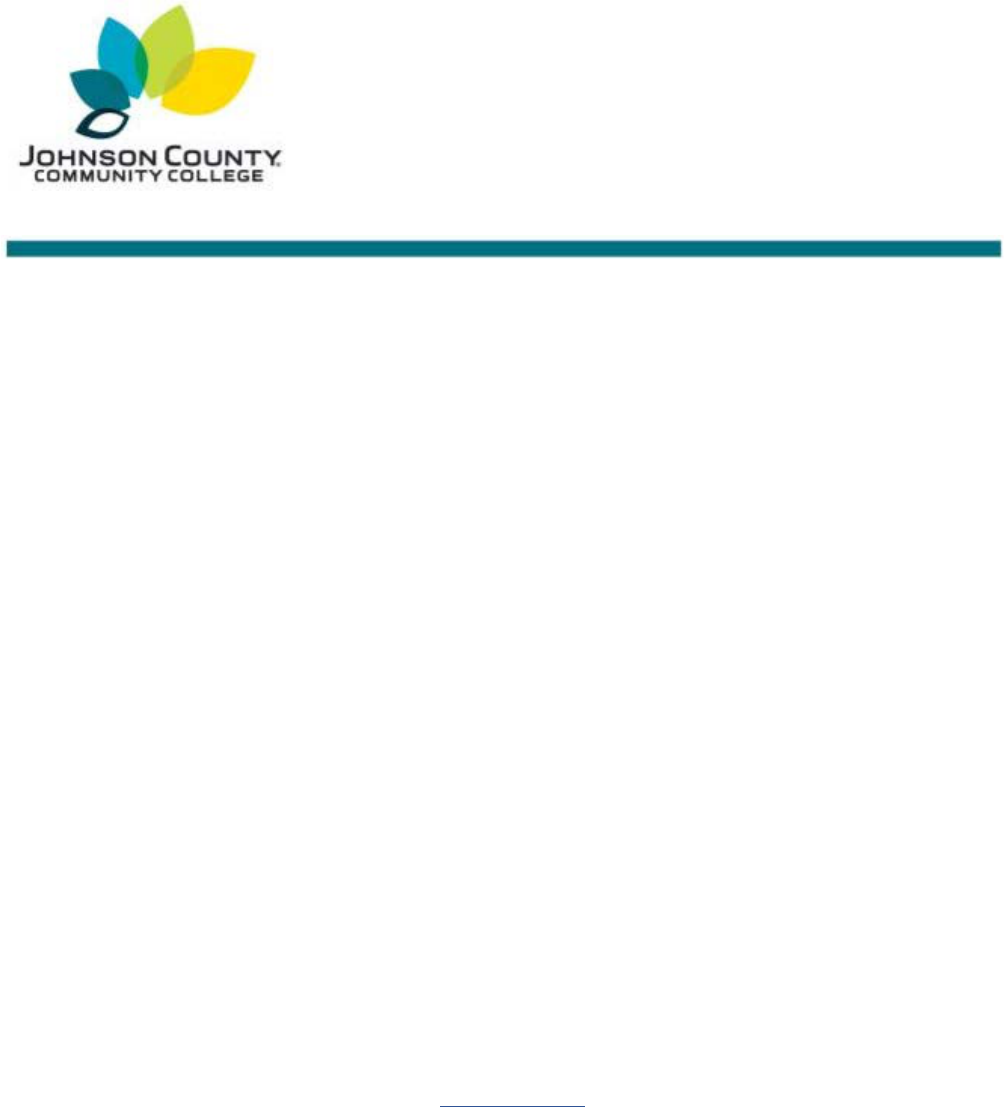
WRITING CENTER
Modern Language Association
(MLA)
Documentation
Last edited: 11/9/2022 1
CONTENTS
Click on any heading below to jump directly to that topic.
WHAT IS MLA? ................................................................................................................. 1
GENERAL FORMATTING GUIDELINES ................................................................................. 2
ELEMENTS OF A PAPER IN MLA STYLE ............................................................................... 2
BEFORE WRITING YOUR PAPER ........................................................................................ 3
WRITING YOUR PAPER ..................................................................................................... 4
WORKS CITED PAGE ......................................................................................................... 8
WORKS CITED: EXAMPLES .............................................................................................. 10
ONLINE SOURCES ........................................................................................................... 11
SCHOLARLY JOURNALS, PERIODICALS, AND NEWSPAPERS .............................................. 13
BOOKS ........................................................................................................................... 16
ANTHOLOGIES AND REFERENCE BOOKS .......................................................................... 20
OTHER SOURCES ............................................................................................................ 20
GOVERNMENT SOURCES ................................................................................................. 23
ANNOTATED BIBLIOGRAPHY ........................................................................................... 23
SAMPLE STUDENT PAPER .................................................................................................. 1
The information in this handout is meant to be helpful, but it is not a substitute for the
MLA Handbook 9
th
Ed.
A copy of the
Handbook
is available for student use in the Writing
Center. Additional help may be found at style.mla.org/
Note: Different instructors may have different requirements. Students should check with
their instructors about their preferred documentation style for the specific course.
WHAT IS MLA?
The Modern Language Association is an organization that supports educators and
researchers. Part of MLA’s work includes creating and maintaining a standardized method in
which writers can cite their sources.

WRITING CENTER
Modern Language Association
(MLA)
Documentation
Last edited: 11/9/2022 2
Citing sources in a written work is one of the most important components of completing a
written assignment. In citing sources, you:
1. Give proper credit to the author(s) whose original ideas you are using in your paper
2. Point the reader back to the original source, if they wish to conduct their own research
on the topic
3. Engage in scholarly and academic debate, using the work of others to support your
argument
4. Avoid plagiarism
GENERAL FORMATTING GUIDELINES
• All pages have a one-inch margin
• Double-space the entire document, including quotations and the Works Cited
• Use a readable typeface such as Times New Roman between 11 and 13-point font,
unless otherwise indicated by your instructor
o Keep a consistent typeface and font size throughout the paper
• Indent each paragraph .5 inch—the Tab key is usually defaulted to this
• Include one space after each sentence
• Use a hanging indent for each entry on the Works Cited page
ELEMENTS OF A PAPER IN MLA STYLE
• A header
• Body of the work, including in-text or parenthetical citations
• The Works Cited page
FIRST PAGE REQUIREMENTS
The first page of your paper must contain the following information:
• A header, justified right, containing your last name and sequential page numbers
• Your name, your professor’s name, the class, and the date, at the top of the page, left
justified
• Your title, centered and in normal font (not underlined, bolded, italicized, in
quotations, etc.)
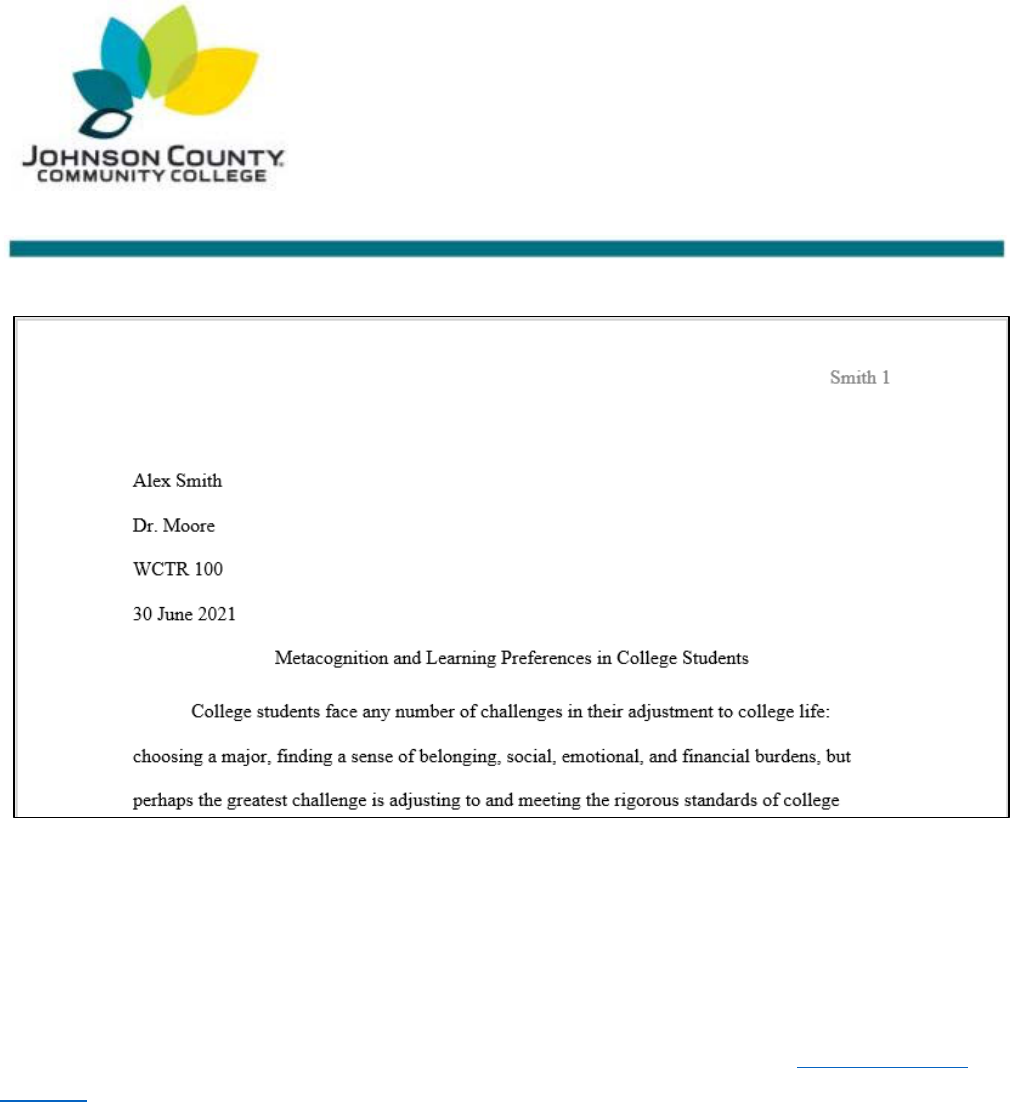
WRITING CENTER
Modern Language Association
(MLA)
Documentation
Last edited: 11/9/2022 3
Figure 1: Example of the first page of a paper in MLA format.
BEFORE WRITING YOUR PAPER
PLAGIARISM
Plagiarism is using someone else’s words or ideas without giving credit to the original source.
Plagiarism is a serious violation of academic integrity and is against JCCC’s Student Code of
Conduct. To avoid plagiarism, cite your sources; use in-text citations, quotations,
paraphrasing, or summarizing to support your own original ideas.
Example:
Original text from Michael Agar’s book,
Language Shock
:
Everyone uses the word
language
and everybody these days
talks about
culture. . . .
“Languaculture” is a reminder, I hope, of
the
necessary
connection between its two parts. . . .
The following sentence is plagiarism, because it uses Agar’s term
“languaculture” without crediting him:
At the intersection of language and culture lies a concept that
might be called “languaculture.”
The following sentence is not plagiarism, because it credits Agar:
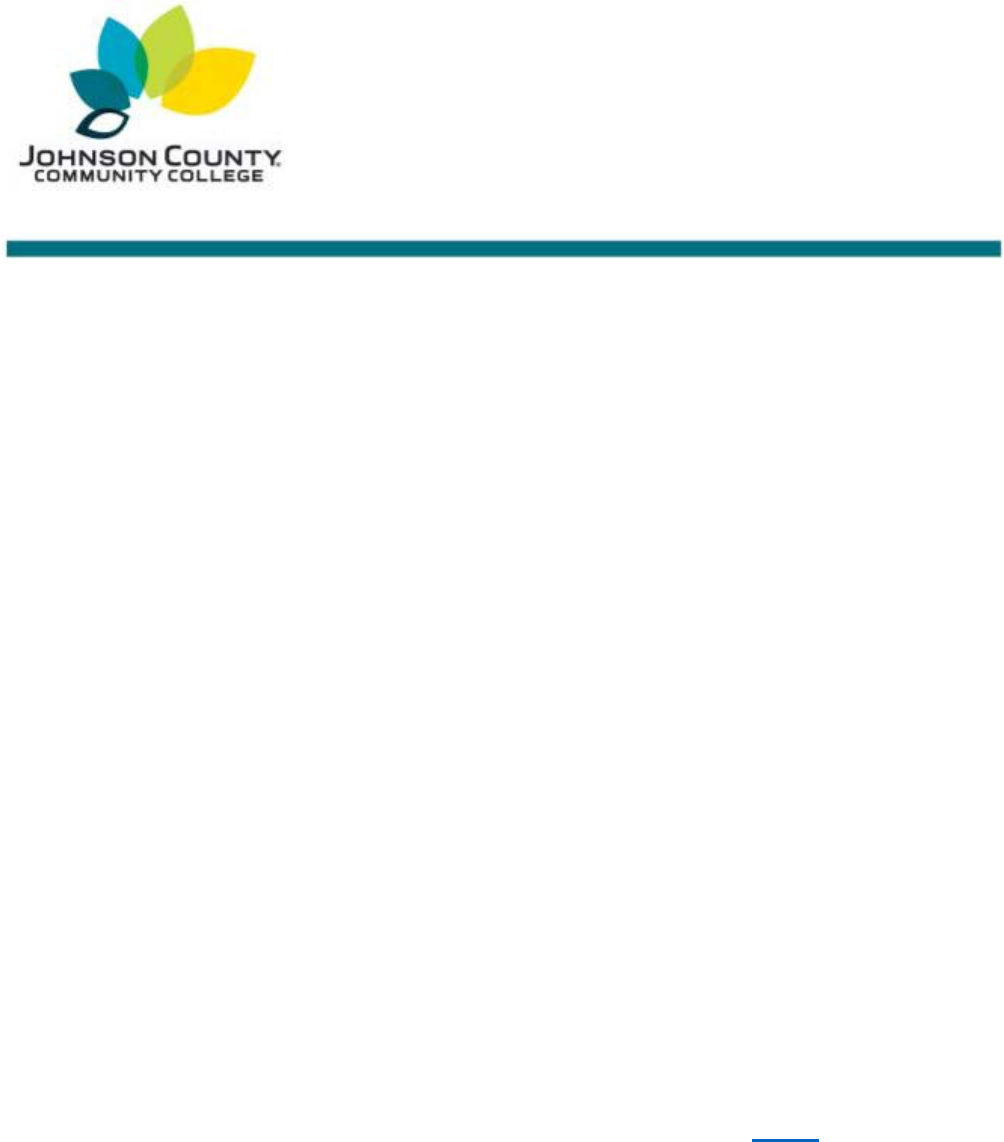
WRITING CENTER
Modern Language Association
(MLA)
Documentation
Last edited: 11/9/2022 4
At the intersection of language and culture lies a concept that
Michael Agar has called “languaculture” (60).
There are other ways to plagiarize, including:
• Self-plagiarizing, which is using your own ideas in something else you have produced,
without citing that previous work
• Paraphrasing too closely to the original source without proper citation
• Summarizing the original source without proper citation
PARAPHRASING
Paraphrasing means putting a source’s ideas into your own words
and
creating new sentence
structures. It is not shifting words around; it is stating ideas in an original way.
It is extremely important to cite anything you have paraphrased.
Example:
Original text:
“Grief, when it comes, is nothing we expect it to be.” (Didion 26).
Plagiarized paraphrase:
When grief comes, it is not what we expect it to be. (Didion 26).
Correctly paraphrased version—not plagiarized:
Most, if not all, individuals are sideswiped by the expressions of
grief; they have trouble anticipating what grief will feel like
(Didion 26).
SUMMARIZING
Summarizing is not paraphrasing. Paraphrasing restates a smaller passage of the reading in
the author’s own words. Summarizing gives a broader view, providing the main points of a
larger portion of the work. If you are summarizing from a source, you still need to cite the
original source.
For additional information on avoiding plagiarism, visit JCCC’s guide on academic
integrity.
WRITING YOUR PAPER
IN-TEXT CITATIONS
In-text citations are short markers in your paper that refer the reader to the full citation on
the Works Cited page. Citations can be incorporated into your paper in two different formats:
within the prose or within parenthetical citations. Typically, both forms of citations are found
in collegiate-level writing.

WRITING CENTER
Modern Language Association
(MLA)
Documentation
Last edited: 11/9/2022 5
• Citation in prose incorporates the author's name within the sentence. The page
number—or any other applicable location marker—goes in parentheses at the end of
the sentence. Do not repeat the author's name in the parentheses.
• Parenthetical citations capture the author’s name and the page number—or time
stamp, chapter, verse, or any other applicable and necessary location marker—in
parentheses at the end of the sentence in which the quote, paraphrase or summary
occurs.
Examples:
CITATION IN PROSE: Naomi Baron broke new ground on the subject
(197).
PARENTHETICAL CITATION: At least one researcher has broken new
ground on the subject (Baron 197).
FULL CITATION ON THE WORKS CITED PAGE:
Baron, Naomi S. “Redefining Reading: The Impact of Digital
Communication Media.”
PMLA
, vol. 128, no. 1, Jan. 2013, pp.
193-200.
If the author’s name is not available, use the first significant word of the title of the
book (italicized) or article (in quotations).
Example:
Baby boomers, known as the first video generation, have become
increasingly sedentary over the past twenty years (“Growing” 24).
DIRECT QUOTATIONS
Incorporating direct quotes into your paper conveys important points exactly as the author of
the source intended and can strengthen the argument you are making in your paper.
When using source material that you want to quote exactly:
• Introduce and incorporate the quote as a grammatically correct sentence
• Quotes cannot stand alone in a paper—do not insert a direct quote without explaining
how it pertains to your paper
• If you use more than one quote in a sentence, place the parenthetical citation as close
to the relevant quote as possible
• Place all the words from the original source inside quotation marks
• Follow the quotation with a parenthetical citation
• The full citation, including the author’s name and all necessary publication information,
goes on the Works Cited page at the end of the paper
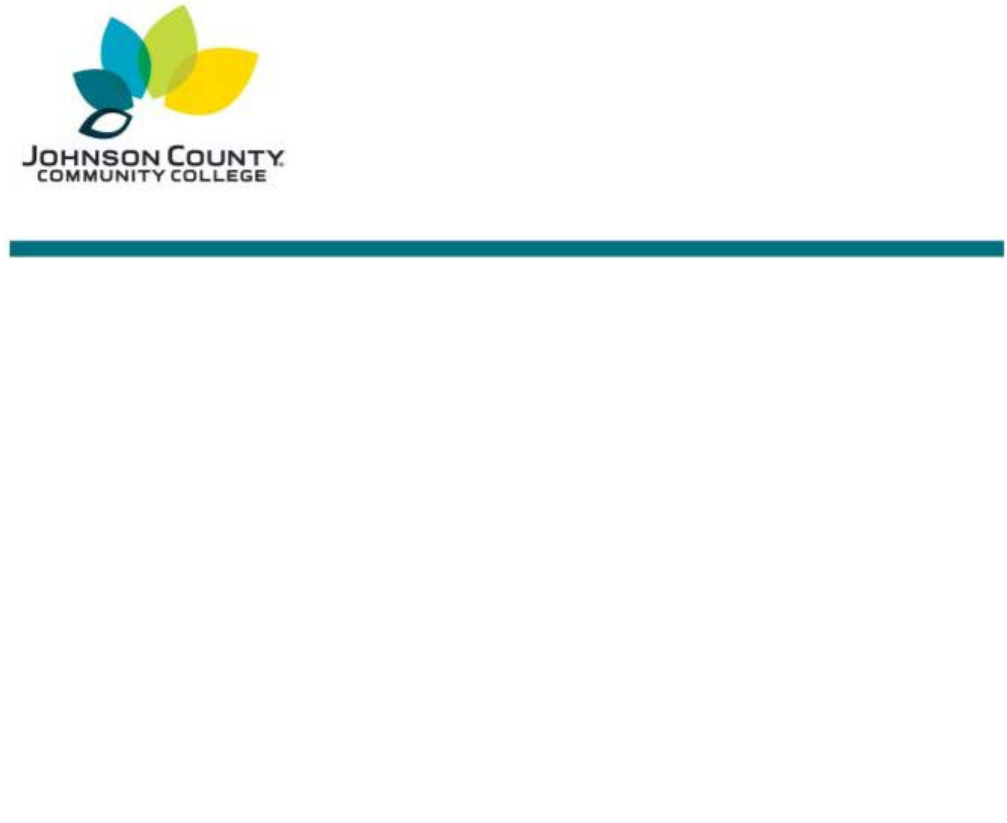
WRITING CENTER
Modern Language Association
(MLA)
Documentation
Last edited: 11/9/2022 6
Examples:
QUOTATION AT THE END OF THE SENTENCE:
Joseph Conrad writes of the company manager in
Heart of Darkness
, “He
was obeyed, yet he inspired neither love nor fear, nor even respect” (87).
QUOTATION DIVIDED BY YOUR OWN WORDS:
“He was obeyed,” writes Joseph Conrad of the company manager in
Heart
of Darkness
, “yet he inspired neither love nor fear, nor even respect” (87).
MULTIPLE QUOTATIONS IN A SENTENCE:
Canada’s literacy history has been described as “a fractured discourse”
(Howells and Kröller 2), an idea echoed by a Jewish Canadian novelist who
writes in French and feels she occupies a position “neither fully within nor
fully without” (Robin 182).
BLOCK QUOTES
Quotations that run longer than four lines within your paper become block quotes. Block
quotes should be used sparingly—the point of writing a paper is for your voice and ideas to
be articulated, rather than that of other authors. The quote should support your thesis;
introduce it, add it, then comment on why it was important.
• Do not use quotation marks
• Introduce the block quote on a new line
• Indent the entire quote 1 inch or 12-16 spaces
• Include the page number at the end of your block quote, outside of the ending
punctuation
• Specify the source in the introduction phrase or sentence, which ends in a colon
• If the block quote appears in the middle of a paragraph, do not indent the next line of
your writing
Example:
At the conclusion of
Lord of the Flies
, Ralph, realizing the horror of his
actions, is overcome by emotion, and:
sobs shook him. He gave himself up to them now for the first time
on the island; great, shuddering spasms of grief that seemed to
wrench his whole body. His voice rose under the black smoke before
the burning wreckage of the island; and infected by that emotion,
the other little boys began to shake and sob too. (186)
While horror captures the boy’s emotions, the imagery connotes naturalism
and phenomenalism. In that . . .
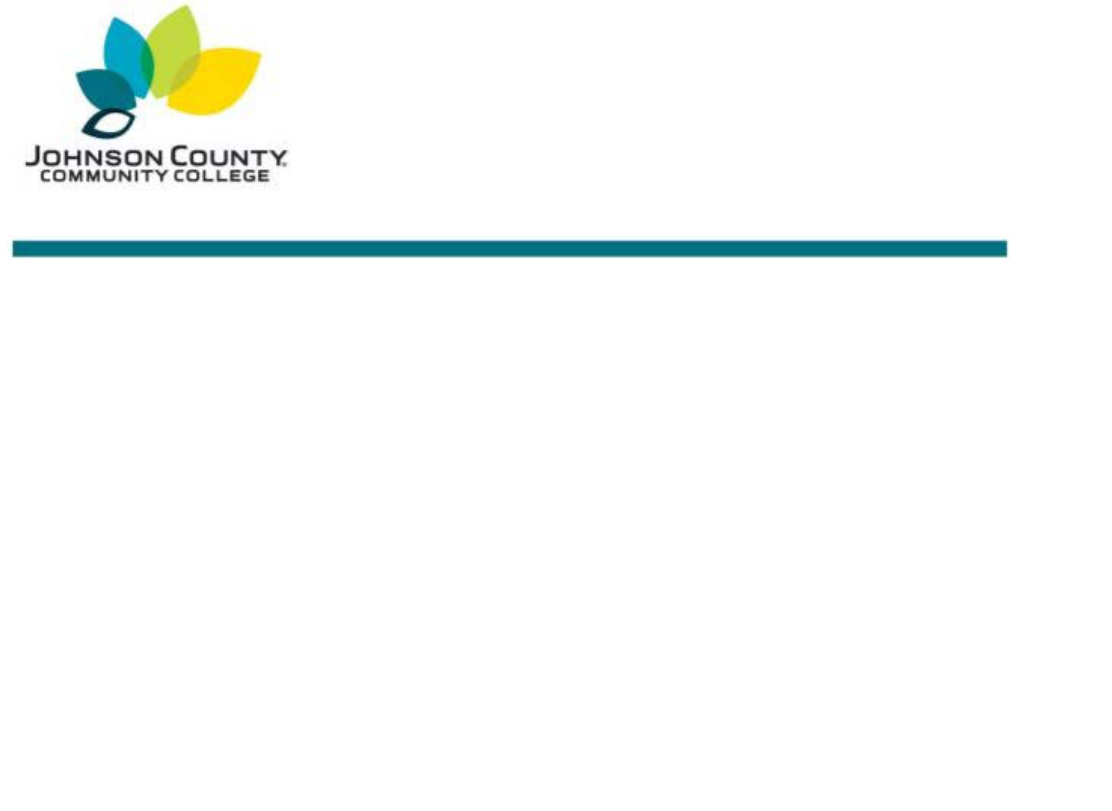
WRITING CENTER
Modern Language Association
(MLA)
Documentation
Last edited: 11/9/2022 7
COMMON KNOWLEDGE
Information is considered common knowledge if it can be found in many different places, is a
noncontroversial fact, and the average person knows the information without having to look
it up. Common knowledge is dependent upon context and can vary between cultures and
disciplines.
Examples:
INFORMATION KNOWN BY MOST PEOPLE: The sky is blue, grass is green.
INFORMATION KNOWN BY A SPECIFIC CULTURAL GROUP: Someone born
in America would know that there are 50 states in the U.S.
INFORMATION KNOWN BY SOMEONE IN A SPECIFIC DISCIPLINE: An
English major would know Jane Austen wrote
Pride and Prejudice.
A
Chemistry major would know an atom is made up of protons, electrons,
and neutrons
Check with your instructor when working on an assignment to know what they consider to be
common knowledge and whether or not it needs to be cited. When in doubt, it is always
best practice to cite the information!
ELLIPSES
Ellipses are three spaced periods (. . .) which signify that you have shortened the original
text in a quotation. If you chose to shorten the original text, make sure you are not altering
the meaning of the original author’s intent.
Examples:
ORIGINAL TEXT:
Americans trained by Balanchine, for example, raised their hip in
arabesque
and engaged in all manner of distortions to achieve speed and a long,
aerodynamic line.
QUOTATION WITH AN ELLIPSIS IN THE MIDDLE:
According to Jennifer Homans’s ballet history,
Apollo’s Angels
, “Americans
trained by Balanchine . . . engaged in all manner of distortions to achieve
speed and a long, aerodynamic line.” (xviii).
QUOTATION WITH AN ELLIPSIS AT THE END OF THE SENTENCE:
In
Apollo’s Angels
, Jennifer Homans writes, “Americans trained by
Balanchine, for example, raised their hips in
arabesque
and engaged in all
manner of distortions . . .” The purpose of these movements, as Homans
notes, was to create a “long, aerodynamic line” (xviii).

WRITING CENTER
Modern Language Association
(MLA)
Documentation
Last edited: 11/9/2022 8
QUOTATION WITH AN ELLIPSIS AT THE END OF THE SENTENCE
FOLLOWED BY A PARENTHETICAL CITATION:
Commenting on the techniques of different national schools of ballet,
Homans remarks, “Americans trained by Balanchine, for example, raised
their hip in
arabesque
and engaged in all manner of distortions . . .” (xviii).
Note: Some instructors require that brackets be placed around the ellipsis to show that it is
the writer’s ellipsis and not part of the original material. If so, follow the same rules as
outlined above, but add brackets around the ellipses, i.e., [. . .].
WORKS CITED PAGE
The Works Cited page is a list of all the sources you cited in
your paper.
FORMAT
• The Works Cited page is a new page after the last
page of your essay
• Capitalize words in titles and proper nouns
o Note: MLA uses traditional punctuation, so
ignore stylistic capitalization
• The words “Works Cited” are centered at the top of the
page, not bolded
• Entries are double-spaced
• Entries have hanging indentation
• Titles of articles, chapters, episodes, etc., are in quotes
• Titles of books, magazines, journals, movies, etc., are
italicized
• Alphabetize the citations according to the first
important word. This could be an author’s last name, a
director, an organization, a title of a work, etc. Disregard
the articles (“a,” “an,” and “the”) when alphabetizing
GENERAL ORDER OF CITATION ELEMENTS
List all available information in the following order.
Note: Not all sources will have all this information:
Figure 2: This is the template
for citing a chapter in a printed
book in MLA. There are many
kinds of media, however, which
may require different elements.
Refer to the examples in this
handout for citing other
sources.

WRITING CENTER
Modern Language Association
(MLA)
Documentation
Last edited: 11/9/2022 9
Core Elements. Facts that are most common to all sources.
1. Author(s)
2. Title of the article, chapter, episode, etc., in quotes
Containers. Information about the larger work in which the source is contained, i.e., the
anthology in which the short story is included or the journal in which the article is printed.
3. Title of container that the article, chapter, episode, etc., is in; this is italicized
4. Other contributors
5. Version
6. Number
7. Publisher name
8. Date of publication
9. Location within the larger source: page number, paragraph, URL, DOI, date, etc.
MISSING INFORMATION
If your source is missing information, use the following guidelines:
• Missing author: Begin the citation with the title.
• Missing publisher: n.p.
• Missing date: n.d.
DOI and URL
The digital object identifier (DOI) is a set of characters that is assigned to a specific online
document to make it easier to find. The DOI is similar to a URL, but more reliable, because
the DOI is assigned only to that particular original source. Unlike URLs, it never changes.
• If a publisher specifies a DOI, include it in the citation entry instead of the URL
• If the DOI is not preceded by http:// or https://, precede it with https://doi.org
Example:
https://doi.org:10.1177/0269881118806297
Note: DOIs and URLs can be complex. Shortened versions of either is acceptable.
• To create unique, short DOIs, go to: http://shortdoi.org/
• If using a shortened-URL service, make sure the link goes to the proper location
DATES
Dates are formatted as Day Month Year. Months other than June and July should be
abbreviated to three letters.
Example:
25 Sep. 2014
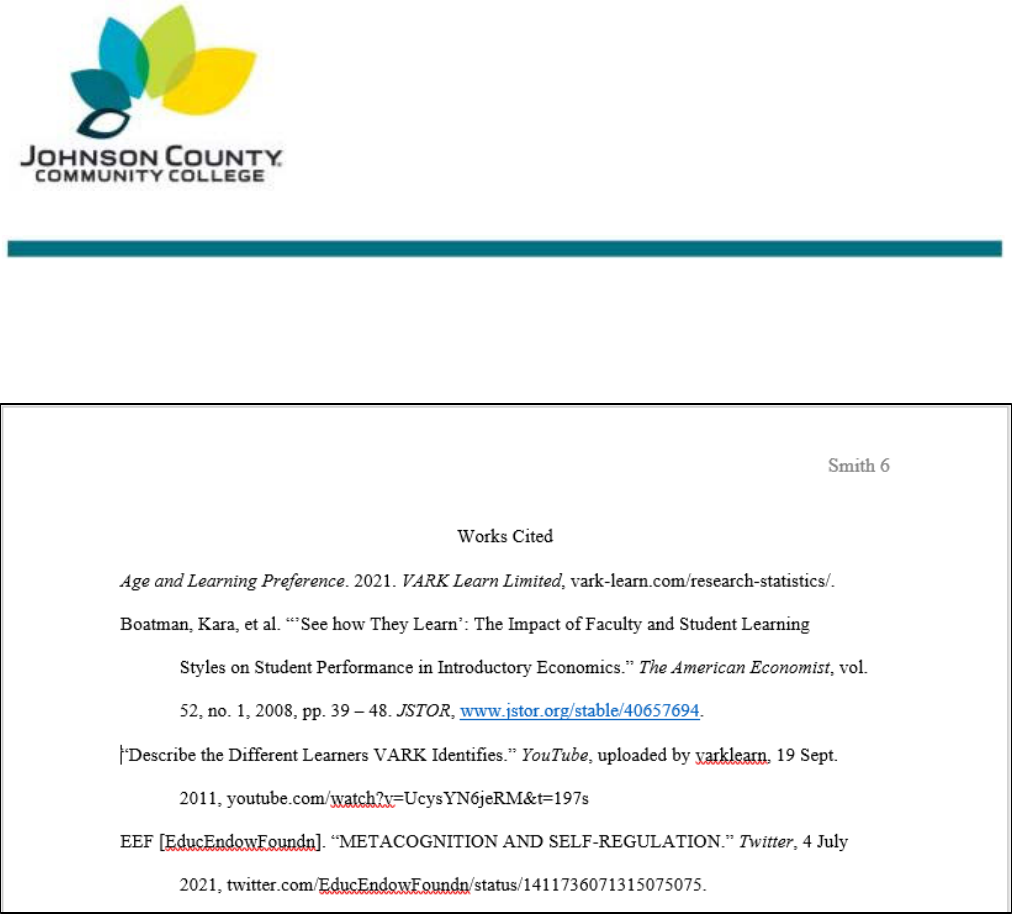
WRITING CENTER
Modern Language Association
(MLA)
Documentation
Last edited: 11/9/2022 10
WORKS CITED: EXAMPLES
Each example below contains an in-text citation and a corresponding Works Cited entry.
Figure 3. Example of a Works Cited page.
Notes:
• It’s a good idea to check with your instructor to determine if they have preferences for
citing sources that may differ from the examples below.
• These examples are not exhaustive—for additional citation information, including
examples of extraordinary citation situations, visit www.style.mla.org/.
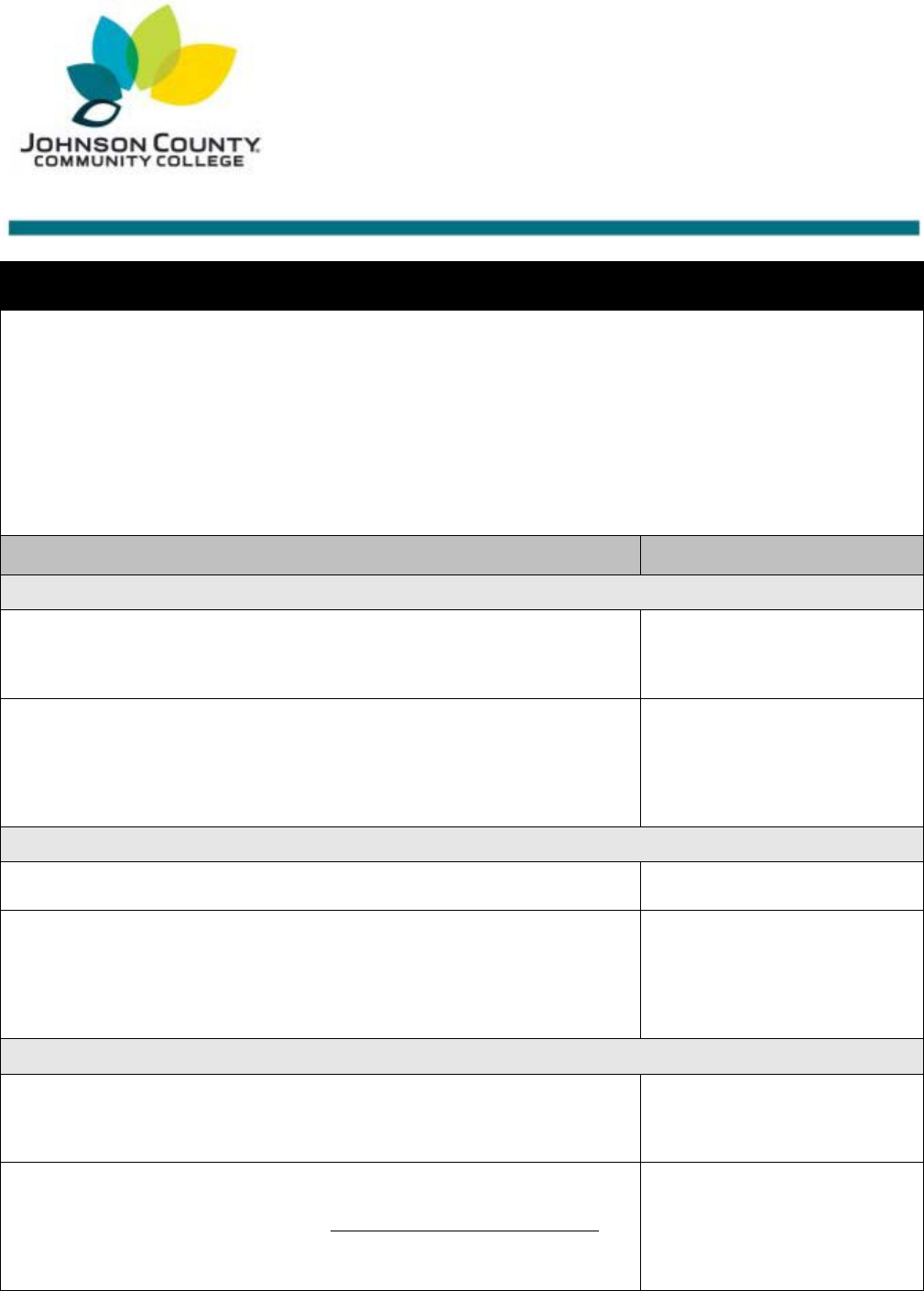
WRITING CENTER
Modern Language Association
(MLA)
Documentation
Last edited: 11/9/2022 11
ONLINE SOURCES
GENERAL FORMAT FOR ONLINE SOURCES
Last name, First name. “Title of Webpage.”
Website.
Version or edition. Publisher, date
published, url or doi. Accessed Day Mon. Year.
Note: Include an “Accessed” date for an online source only if:
• It does not have a publication date
• It appears to have been altered or removed since you first accessed it
• It is regularly updated (Breaking news, weather forecasts, stock market reports, etc.)
Full Citation on the Works Cited Page
Parenthetical Citation
Online Article with an Author
Author’s Last Name, First name.
Website.
Version or edition.
Publisher, Date, url.
(Author’s Last Name)
Bauch, Nicholas.
Enchanting the Desert: A Pattern Language for
the Production of Space
. Stanford UP, 2016,
www.enchantingthedesert.com/home/.
(Bauch)
Online Article without an Author
"Article Title."
Website
, Publication Date, url.
(“Shortened Article Title”)
"Athlete's Foot - Topic Overview."
WebMD
, 25 Sep. 2014,
www.webmd.com/skin-problems-and-
treatments/tc/athletes-foot-topic-overview.
(“Athlete's")
Video with Creator’s Name
Creator’s Last Name, First Name. "Video Title."
Website
,
uploaded by Company Name, Upload Date, url.
(Creator’s Last Name)
McGonigal, Jane. "Gaming and Productivity."
YouTube
, uploaded
by Big Think, 3 July 2012, www.youtube.com/watch?v
=mkdzy9bWW3E.
(McGonigal)

WRITING CENTER
Modern Language Association
(MLA)
Documentation
Last edited: 11/9/2022 12
Full Citation on the Works Cited Page
Parenthetical Citation
Video without Creator’s Name
"Video Title."
Website
, uploaded by Company Name, Upload
Date, url.
(“Shortened Title”)
“What Is the MLA International Bibliography?”
Vimeo
, uploaded
by MLA International Bibliography, 14 Oct. 2016,
vimeo.com/187399565.
(“What Is”)
Social Media
GENERAL FORMAT FOR SOCIAL MEDIA
Last Name, First Name or Organization Name [@handle]. Description of cited item.
Social
Media Platform
, Publication Date, URL
Note: If a source has an online handle that differs significantly from the author’s name,
include the handle in brackets after the author’s name. If they are similar, omit the handle.
Author’s Last Name, First Name or Organization Name
[@handle]. Description of cited item.
Social Media
Platform
, Publication Date, url.
(Author’s Last Name or
Handle)
Chaucer Doth Tweet [@LeVostreGC]. "A daye wythout
anachronism ys lyke Emily Dickinson wythout her
lightsaber."
Twitter
, 7 Apr. 2018 twitter.com/
LeVostreGC/status/98829987286827009.
(Chaucer Doth Tweet)
Online Picture, Photograph, or Other Image
Artist’s Last Name, First Name. Photograph Title.
date. Webpage, url.
(Artist’s Last Name)
Sheldon, Natasha. Photograph of The Muleteer. “Human
Remains in Pompeii: The Body Casts,” 23 Mar. 2014.
Decoded Past, decodedpast.com/human-remains.
(Sheldon)
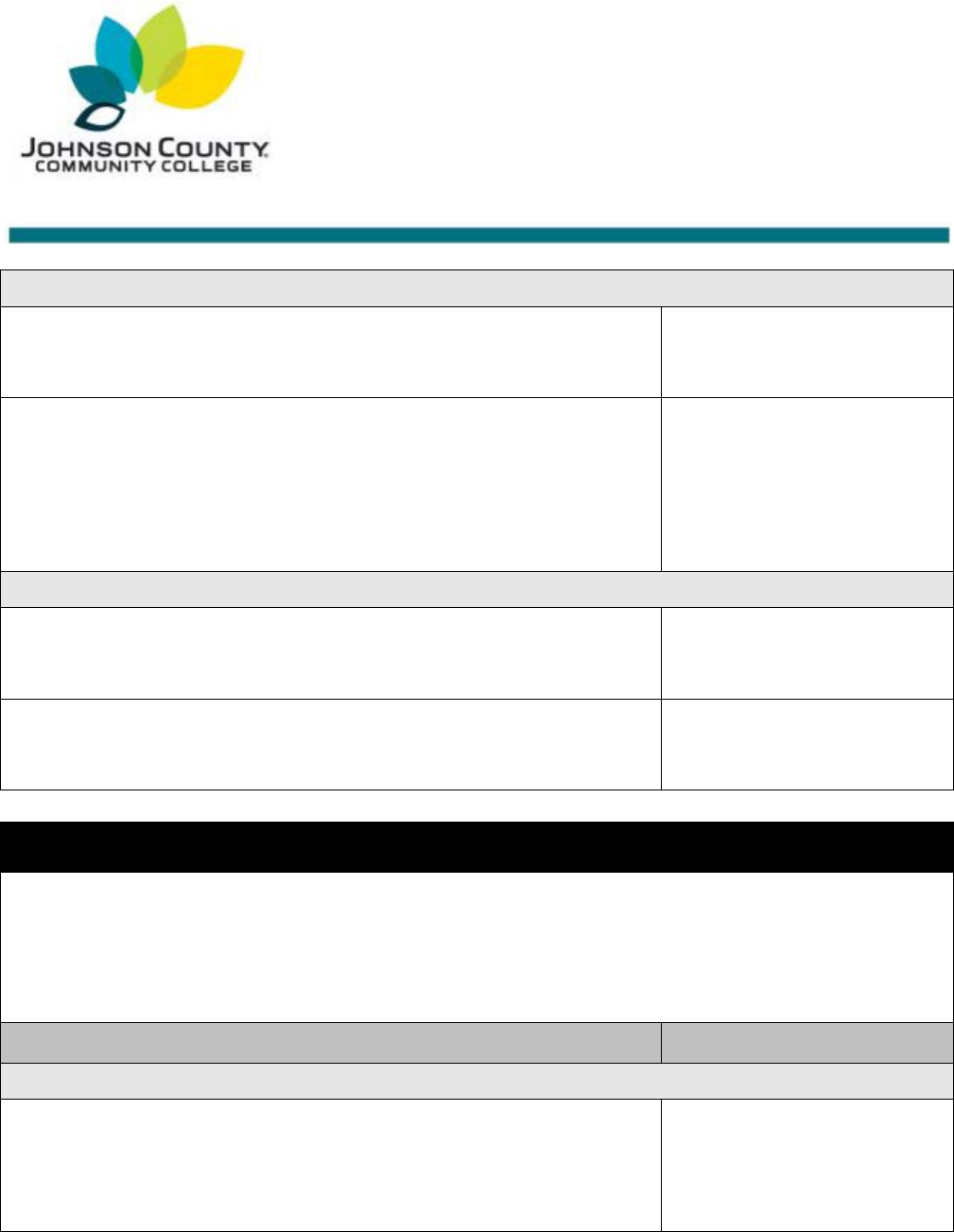
WRITING CENTER
Modern Language Association
(MLA)
Documentation
Last edited: 11/9/2022 13
Article from a Blog
Last name, First name. “Article Title.”
Website.
Publisher,
Publication Date, url. Blog Title.
(Author’s Last Name)
Hayes, Terrence. “The Wicked Candor of Wanda Coleman.”
The
Paris Review
, 12 June 2020, www.theparisreview
.org/blog/2020/06/12/the-wicked-candor-of-wanda-
coleman/. The Daily.
(Hayes)
E-Mail
Sender’s Last Name, First Name. “Subject Line.” Received by
Receiver’s First Name Last Name. Date E-mail sent.
(Sender’s Last Name)
King, Bruce. “Re: Spanish Currency.” Received by Naomi
Kilkender, 15 Nov. 2021.
(King)
SCHOLARLY JOURNALS, PERIODICALS, AND NEWSPAPERS
GENERAL FORMAT FOR JOURNALS:
Author’s Last Name, First Name. “Article Title.”
Journal Title
, vol. #, no. #, year published,
page numbers.
Note: If a publisher specifies a DOI or stable URL, include it in the citation, not the URL.
Full Citation on the Works Cited Page
Parenthetical Citation
Database Scholarly Journal Article
Author’s Last Name, First Name. “Article Title,”
Journal Title
, vol.
#, no. #, Date, page number(s). Database Title, doi or
permalink.
(Author’s Last Name page
number)
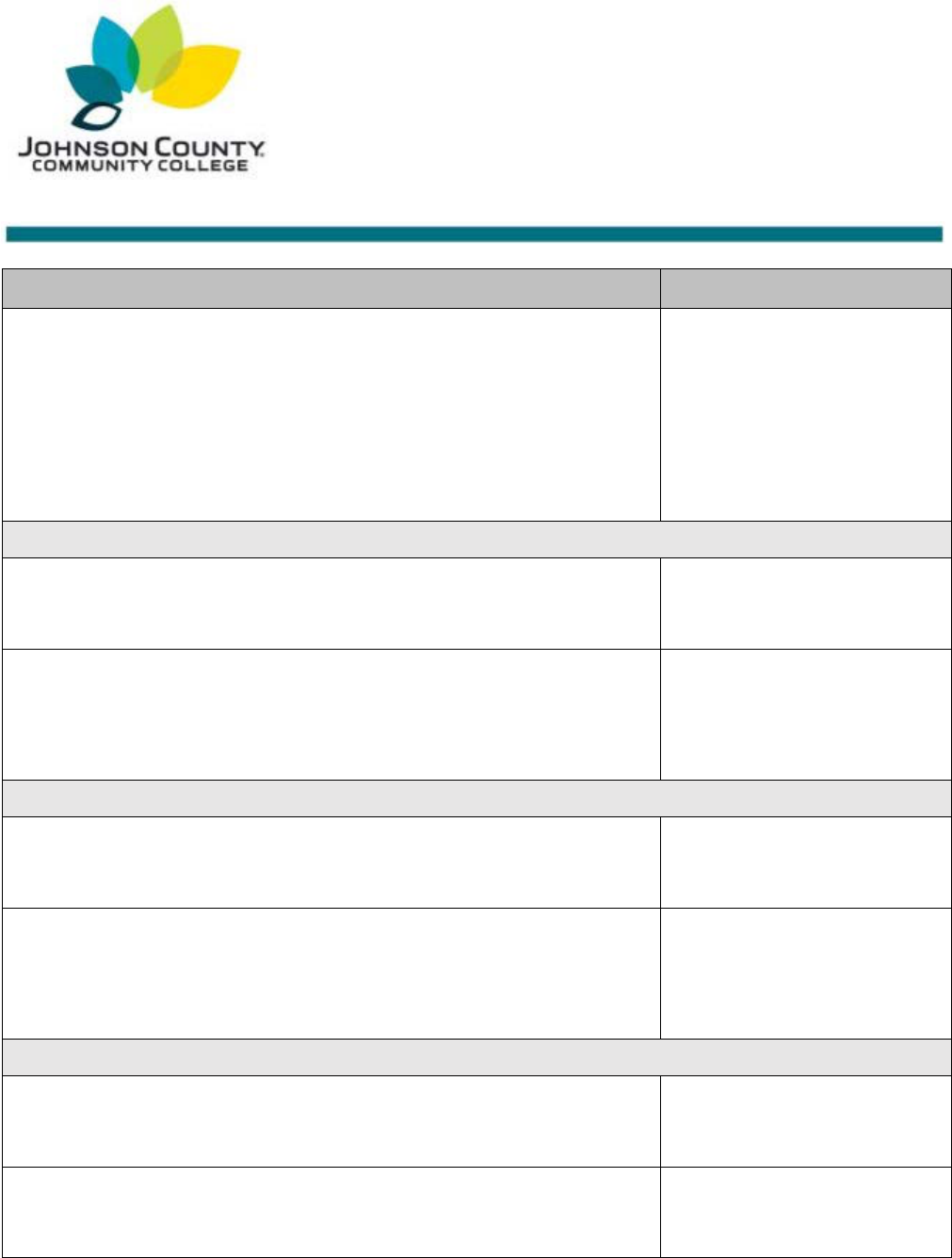
WRITING CENTER
Modern Language Association
(MLA)
Documentation
Last edited: 11/9/2022 14
Full Citation on the Works Cited Page Parenthetical Citation
Bockelman, Brian. “Buenos Aires
Bohème
: Argentina and the
Transatlantic Bohemian Renaissance, 1890-1910,”
Modernism/modernity
, vol. 23, no. 1, Jan. 2016, pp. 37-
63.
Project Muse
, https://doi.org/ 10.1353/ mod.
2016.0011.
(Bockelman 44)
Online Scholarly Journal Article
Last Name, First Name. "Article Title".
Journal Title
, vol. #, no.
#, Publication Date, url or doi.
(Author’s Last Name)
Alpert-Abrams, Hannah. "Machine Reading the
Primeros
Libros
."
Digital Humanities Quarterly
, vol. 10, no. 4,
2016, www.digitalhumanities.org/dhq/vol/10/4.html.
(Alpert-Abrams )
Printed Scholarly Journal Article
Author’s Last Name, First Name. “Article Title.”
Journal Title
, vol.
#, no. #, Date, page number(s).
(Author’s Last Name page
number)
Boggs, Colleen Glenney. “Public Reading and the Civil War Draft
Lottery.”
American Periodicals
, vol. 26, no. 2, 2016,
pp. 149-66.
(Boggs 150)
Unsigned or Anonymous Article
“Article Title.”
Journal Title
, vol. #, no. #, Date, page
number(s).
(“Shortened Article Title”
page number)
"New Discoveries at Herculaneum."
Ancient History,
Sept. 2006,
pp. 53-67.
("New Discoveries" 59)
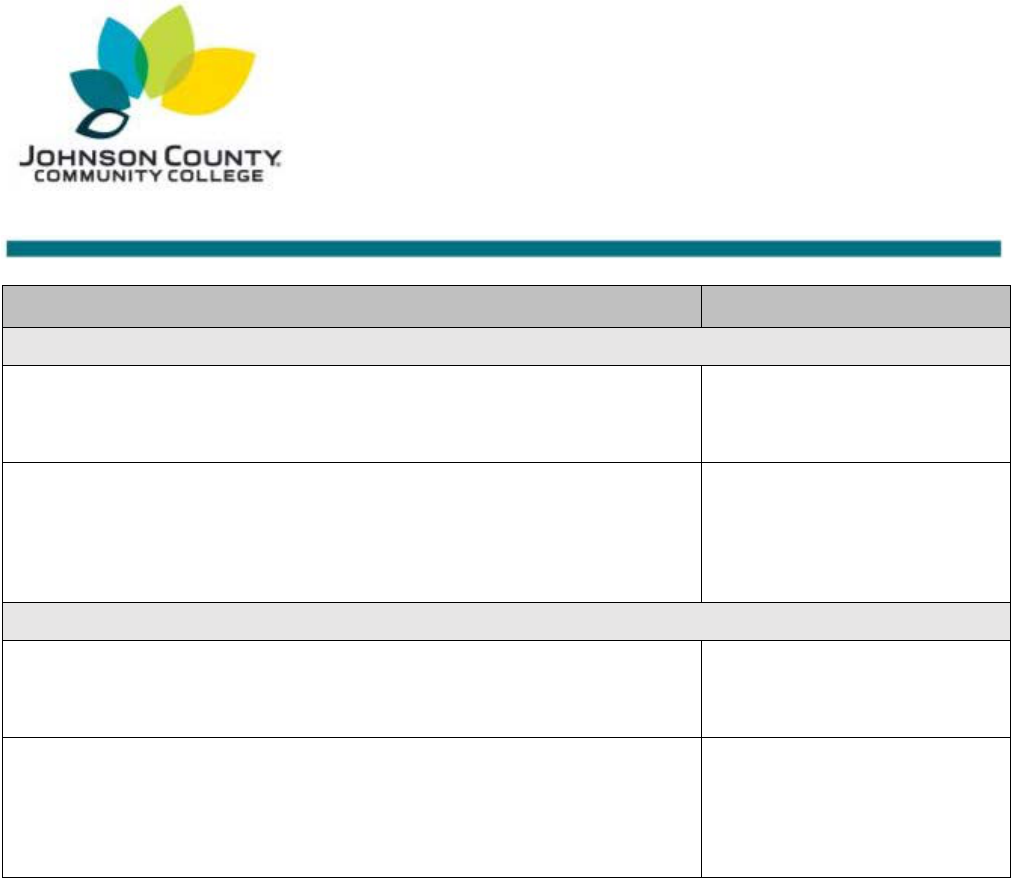
WRITING CENTER
Modern Language Association
(MLA)
Documentation
Last edited: 11/9/2022 15
Full Citation on the Works Cited Page Parenthetical Citation
Online News Publication
Last Name, First Name. "Article Title".
News Outlet
, Publication
Date, url.
(Author’s Last Name)
Parker-Pope, Tara. "How to Age Well." The New York Times, 2
Nov. 2017, www.nytimes.com/guides/well/how-to-age-
well.
(Parker-Pope)
Online Magazine Article
Author’s Last Name, First Name. “Article Title.”
Magazine Title
,
vol. #, no. #, Date, url.
(Author’s Last Name)
Riis, Jacob, “Huddled Masses.”
Lapham’s Quarterly
, vol. 10, no.
1, Winter 2017, www.laphamsquarterly.org
/home/huddled-masses.
(Riis)
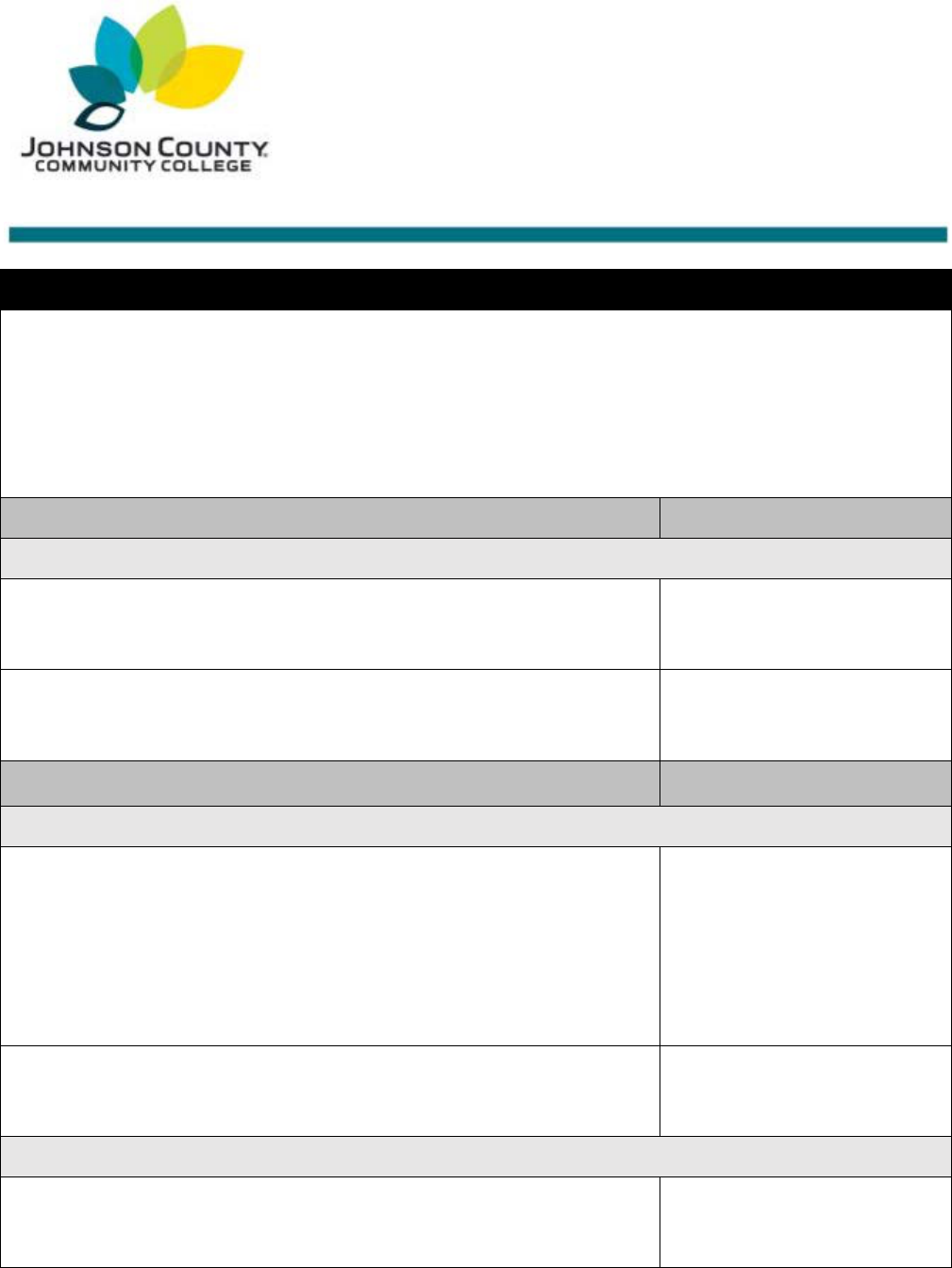
WRITING CENTER
Modern Language Association
(MLA)
Documentation
Last edited: 11/9/2022 16
BOOKS
GENERAL FORMAT FOR BOOKS
Author’s Last Name, First Name.
Book Title
. Publisher, Publication Date.
Note: Only cite the publisher’s location if:
• The source was published before 1900
• The publisher has offices in more than one country
Full Citation on the Works Cited Page
Parenthetical Citation
Book with One Author
Author’s Last Name, First Name. Book Title. Publisher,
Publication Date.
(Author’s Last Name page
number)
Rowling, J.K.
Harry Potter and the Philosopher’s Stone
. London,
Bloomsbury, 1997.
(Rowling)
Full Citation on the Works Cited Page Parenthetical Citation
Book with Two Authors
First Author’s Last Name, First Name, and Second Author’s First
Name Last Name.
Book Title
. Publisher, Publication Date.
Note: List the authors in the same order as on the book. For
alphabetizing, reverse the order of names of just the first
author.
(First Author’s Last Name
and Second Author’s Last
Name page number)
Weidenborner, Stephen, and Domenick Caruso.
Writing
Research Papers
. St. Martin's Press, 1986.
(Weidenborner and Caruso
23)
Book with More Than Two Authors
First Author’s Last Name, First Name, et al.
Book Title
.
Publisher, Publication Date.
(First Author’s Last Name et
al. page number)
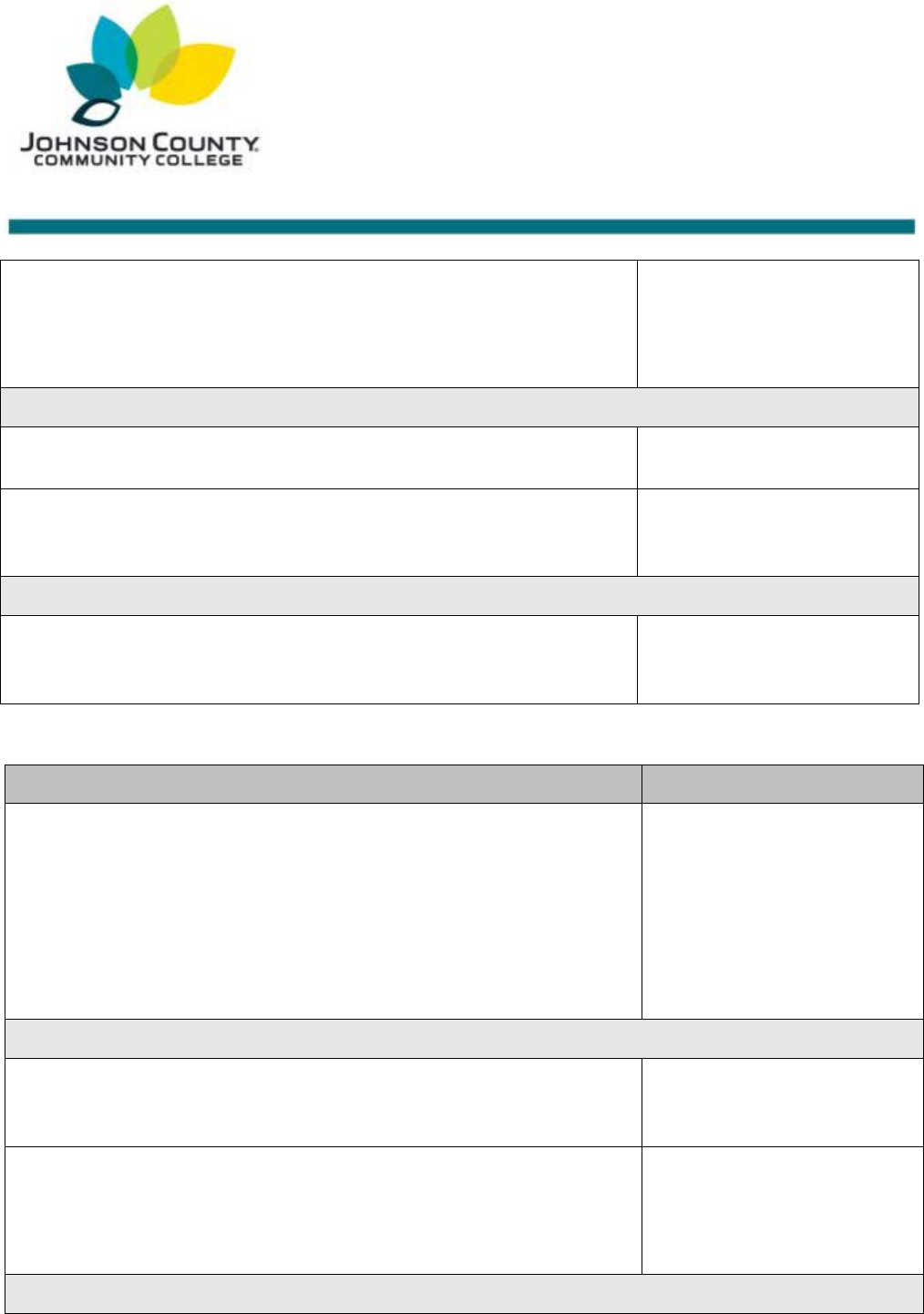
WRITING CENTER
Modern Language Association
(MLA)
Documentation
Last edited: 11/9/2022 17
Wysocki, Anne Frances, et al.
Writing New Media: Theory and
Applications for Expanding the Teaching of
Composition
. Utah State UP, 2004.
(Wysocki et al. 53)
Book with an Unknown Author
Book Title
. Any other contributors, Publisher, Publication Date.
(
Shortened Book Title
page
number)
Beowulf
. Translated by Alan Sullivan and Timothy Murphy,
edited by Sarah Anderson, Pearson, 2004.
(
Beowulf
23)
Multiple Works by One Author
List the full name for the first entry, in alphabetical order based
on the title, per the format for books; for subsequent entries,
omit the author’s name and replace it with dashes.
(Shortened Title page
number)
Full Citation on the Works Cited Page Parenthetical Citation
Borroff, Marie.
Language and the Poet: Verbal Artistry in Frost,
Stevens, and Moore.
U of Chicago P, 1979
-----. “Sound Symbolism as Drama in the Poetry of Robert
Frost.”
PMLA
, vol. 107, no. 1, Jan. 1992, pp. 131-44.
JSTOR
, https://doi.org/10.2307/462806.
(
Language
13)
(“Sound” 9)
Book Published as an E-book
Author’s Last Name, First Name.
Book Title
. E-book ed.,
Publisher, Publication Date.
(Author’s Last Name page
number)
O’Connor, Patricia.
Woe is I: The Grammarphobe’s Guide to
Better English in Plain English
. E-Book ed., Riverhead
Books, 2009.
(O’Connor 104)
Book Published on a Website
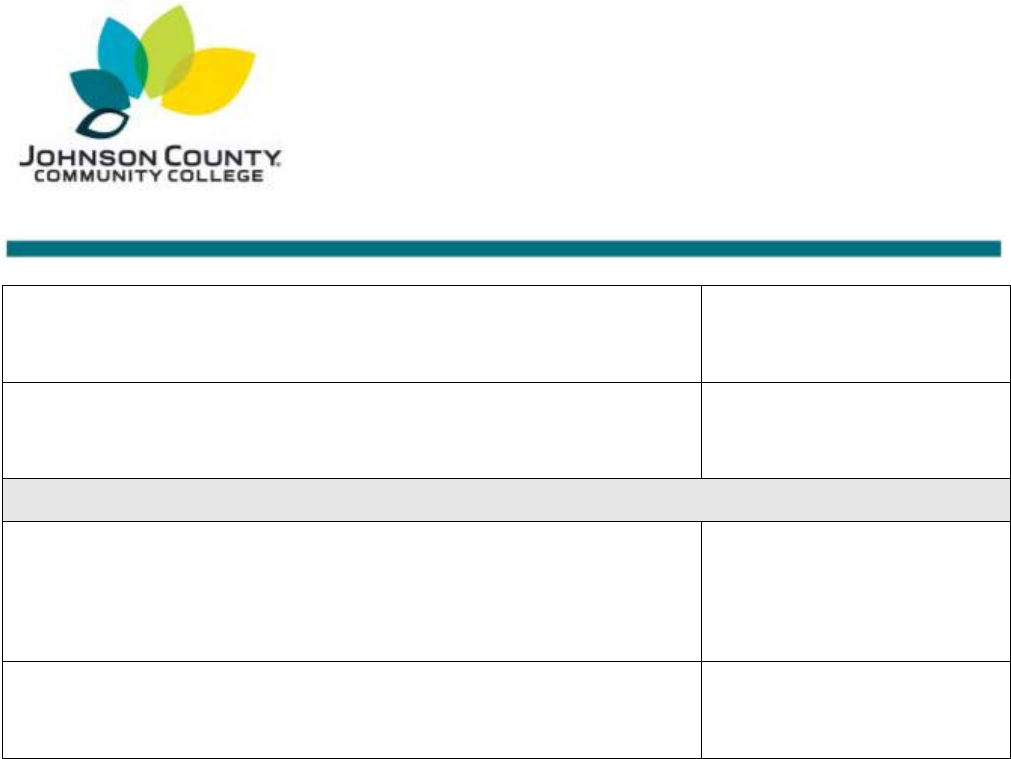
WRITING CENTER
Modern Language Association
(MLA)
Documentation
Last edited: 11/9/2022 18
Author’s Last Name, First Name.
Book Title
.
Publisher, Publication Date, doi or url.
(Author’s Last Name)
Miller, Daniel, et al.
How the World Changed Social Media
. UCL
Press, 2016, https://doi.org/10.07/j.ctt1g69z35.
(Miller et al.)
Book Published as an Audiobook
Author’s Last Name, First Name.
Book Title
. Narrated by First
Name Last Name, audiobook ed., Publisher, Publication
Date.
(Author’s Last Name)
Lee, Harper.
To Kill a Mockingbird
. Narrated by Sissy Spacek,
audiobook ed., unabridged ed., HarperAudio, 2014.
(Lee)

WRITING CENTER
Modern Language Association
(MLA)
Documentation
Last edited: 11/9/2022 19
Full Citation on the Works Cited Page Parenthetical Citation
Edited Collection of Stories or Essays
Editor’s Last Name, First Name, editor.
Book Title
. Publisher,
Publication Date.
(Editor’s Last Name)
Baron, Sabrina Alcorn, et al., editors.
Agent of Change: Print
Culture Studies after Elizabeth L. Eisenstein
. U of
Massachusetts P/Library of Congress, Center for the
Book, 2007.
(Baron et al.)
Edited Edition of Another Author’s Work
Author’s Last Name, First Name. Book Title. Edited by First
Name Last Name, Publisher, Publication Date.
(Author’s Last Name page
number)
Milton, John.
The Riverside Milton
. Edited by Roy Flannagan,
Houghton Mifflin, 1998.
(Milton 89)
Holy Book
Book Title
. Publisher, Publication Date.
(
Book Title
verse, sutra, or
page number
)
The Holy Bible: New Revised Standard Version
. New York,
Oxford University, 1996.
(
The Holy Bible
Rev.
1:1-4)
The Qur’an. Translated by M. A. S. Abdel Haleem,
Oxford UP,
2015.
(
The Qur’an
sutra 43)
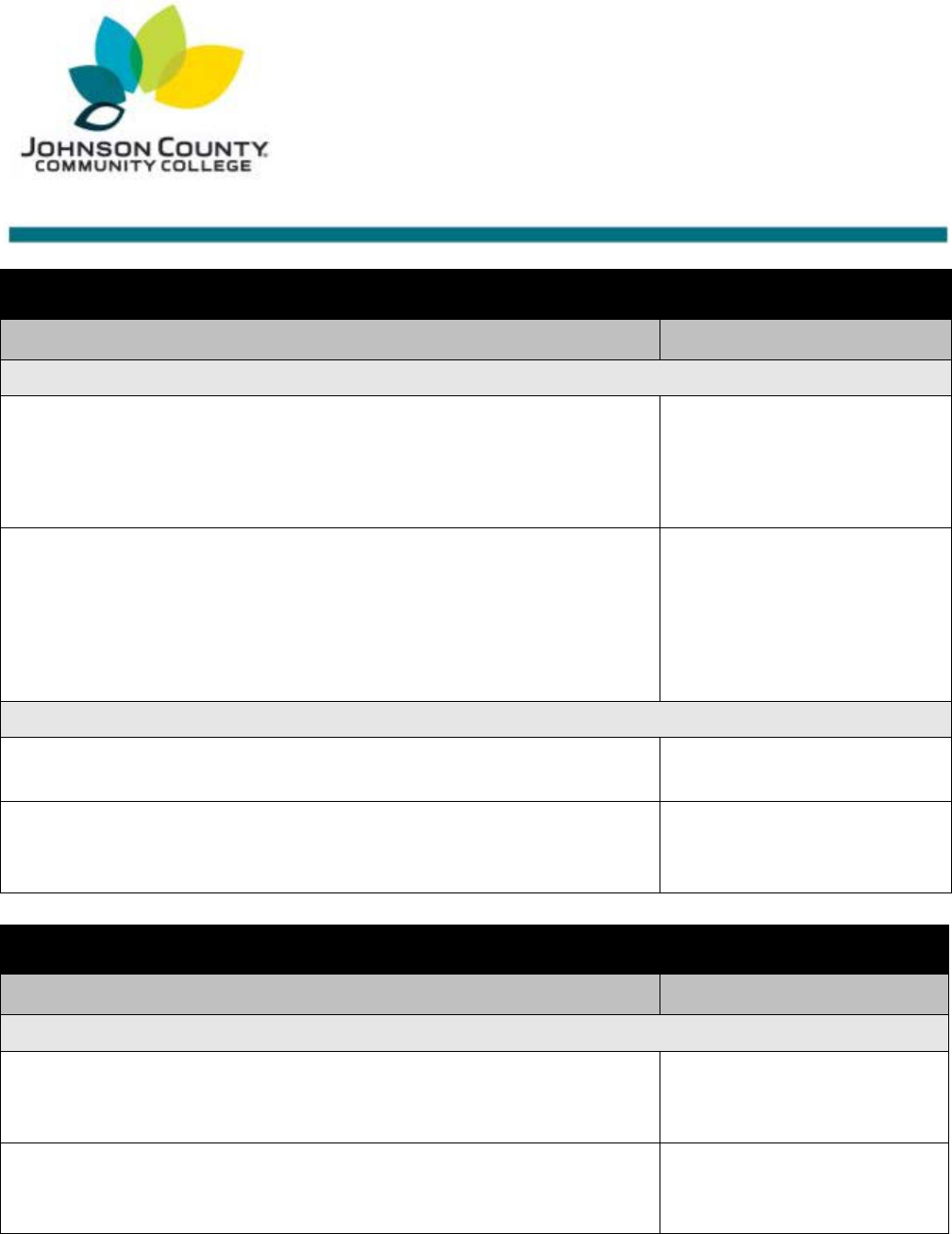
WRITING CENTER
Modern Language Association
(MLA)
Documentation
Last edited: 11/9/2022 20
ANTHOLOGIES AND REFERENCE BOOKS
Full Citation on the Works Cited Page
Parenthetical Citation
Selection from an Anthology
Author’s Last Name, First Name. “Title of Selection.”
Anthology
Title,
edited by First Name Last Name, Publisher, Date,
page number(s).
(Author’s Last Name page
number)
Sabau, Ana. “The Perils of Ownership: Property and Literature in
Nineteenth-Century Mexico.”
Mexican Literature in
Theory
, edited by Ignacio M. Sánchez Prado, Bloomsbury
,
2018, pp. 33-54.
(Sabau 43)
Selection without an Author from a Reference Book
“Article Title.”
Reference Book Title.
N
th
ed. Date.
(“Shortened Article Title”
page number)
“Cognition.” Webster’s Ninth New Collegiate Dictionary. 9th ed.
1984.
(“Cognition” 257)
OTHER SOURCES
Full Citation on the Works Cited Page
Parenthetical Citation
Film
Film Title
. Directed by First Name Last Name, Production
Company, Release Date.
(
Shortened Title
)
Opening Night
. Directed by John Cassavetes, Faces Distribution,
1977.
(
Opening
)
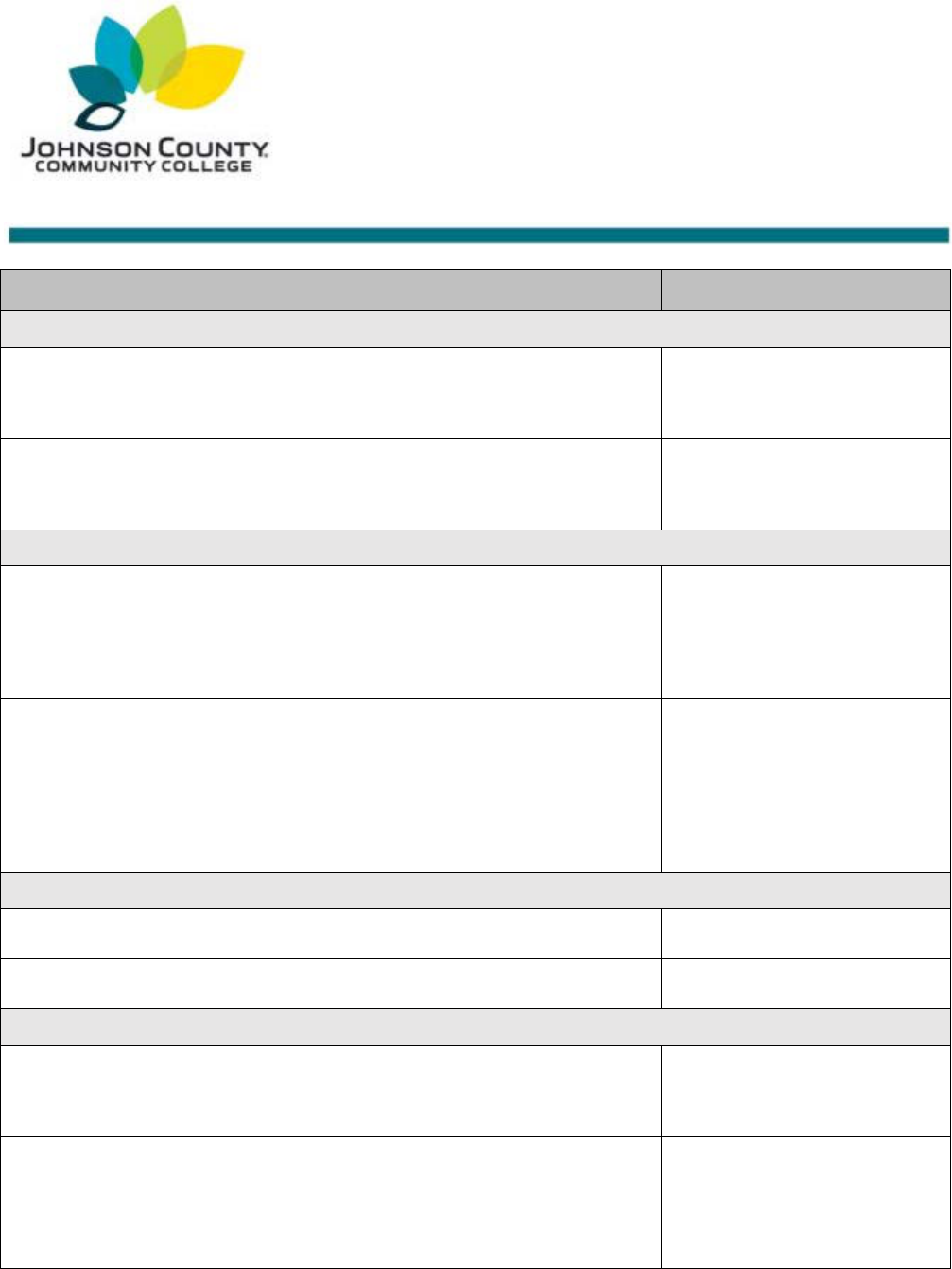
WRITING CENTER
Modern Language Association
(MLA)
Documentation
Last edited: 11/9/2022 21
Full Citation on the Works Cited Page
Parenthetical Citation
Television Episode
"Episode Title."
Series Title
, season #, episode #, Production
Company, Release Date.
Website Name
, URL.
(“Episode Title”)
“I, Borg.”
Star Trek: The Next Generation
, season 5, episode 23,
Paramount Pictures, 1992.
Netflix
, www.netflix.com.
(“I, Borg.”)
Podcast
Host’s Last Name, First Name. “Episode Title.”
Program Title,
additional contributors, publisher, date.
Website
, Date,
app.
(“Shortened Title”)
“Yiyun Li Reads ‘On the Street Where You Live.’” The Writer’s
Voice: New Fiction from The New Yorker, hosted by
Deborah Treisman, podcast ed., The New Yorker / WNYC,
3 Jan. 2017. iTunes app.
(“Yiyun Li”)
Personal Interview
Interviewee’s Last Name First Name. Description. Date.
(Interviewee’s Last Name)
Wexler, Jojo. Telephone interview with the author. 3 Nov. 2019.
(Wexler)
In-person Lectures, Talks, Presentations, and Speeches
Presenter’s Last Name, First Name. “Presentation Title.” Event
Name, Date Presented, Location.
(Presenter’s Last Name)
Atwood. Margaret. “Silencing the Scream.” Boundaries of the
Imagination Forum. MLA Annual Convention, 29 Dec.
1993, Royal York Hotel, Toronto.
(Ford)
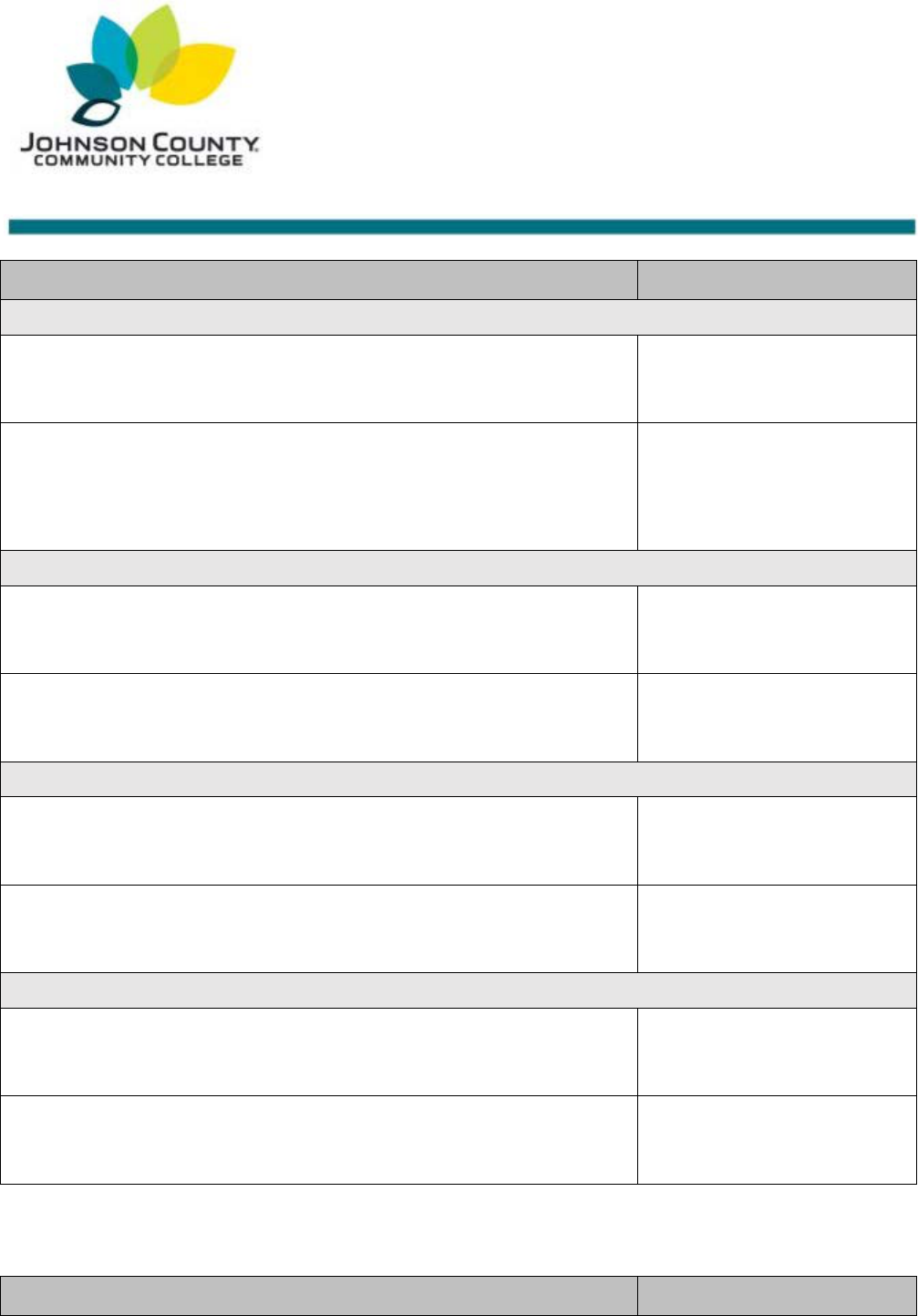
WRITING CENTER
Modern Language Association
(MLA)
Documentation
Last edited: 11/9/2022 22
Full Citation on the Works Cited Page
Parenthetical Citation
Online Lectures, Talks, Presentations, and Speeches
Presenter’s Last Name, First Name. "Video Title."
Website
,
Upload Date, url.
(Presenter’s Last Name)
Dewitt, Tyler. "Online learning could change academia--for
good." TED, May 2020 www.ted.com/talks/tyler_dewitt_
online_learning_could_change_academia_for_good.
(Dewitt)
Advertisement
"Ad Title."
Publisher
, Publication Date, url. Type of
Advertisement
(“Shortened Title”)
“Get the Best of
The New Yorker
.”
The New Yorker
, 10 Jan.
2017, www.newyorker.com. Pop-up advertisement.
(“Get the Best”)
Song
Artist’s Last Name, First Name. "Song Title." Music Producer,
Release Date.
Application
.
(Artist’s Last Name)
Lopez, Jennifer. “Vivir mi vida.” Sony Music Latin, 2017. Spotify
app.
(Lopez)
Performance
Artist’s Last Name, First Name.
Performance Title.
Date,
Location.
(Artist’s Last Name)
Beyoncé.
The Formation World Tour
. 14 May 2016, Rose Bowl,
Los Angeles.
(Beyoncé)
Full Citation on the Works Cited Page
Parenthetical Citation
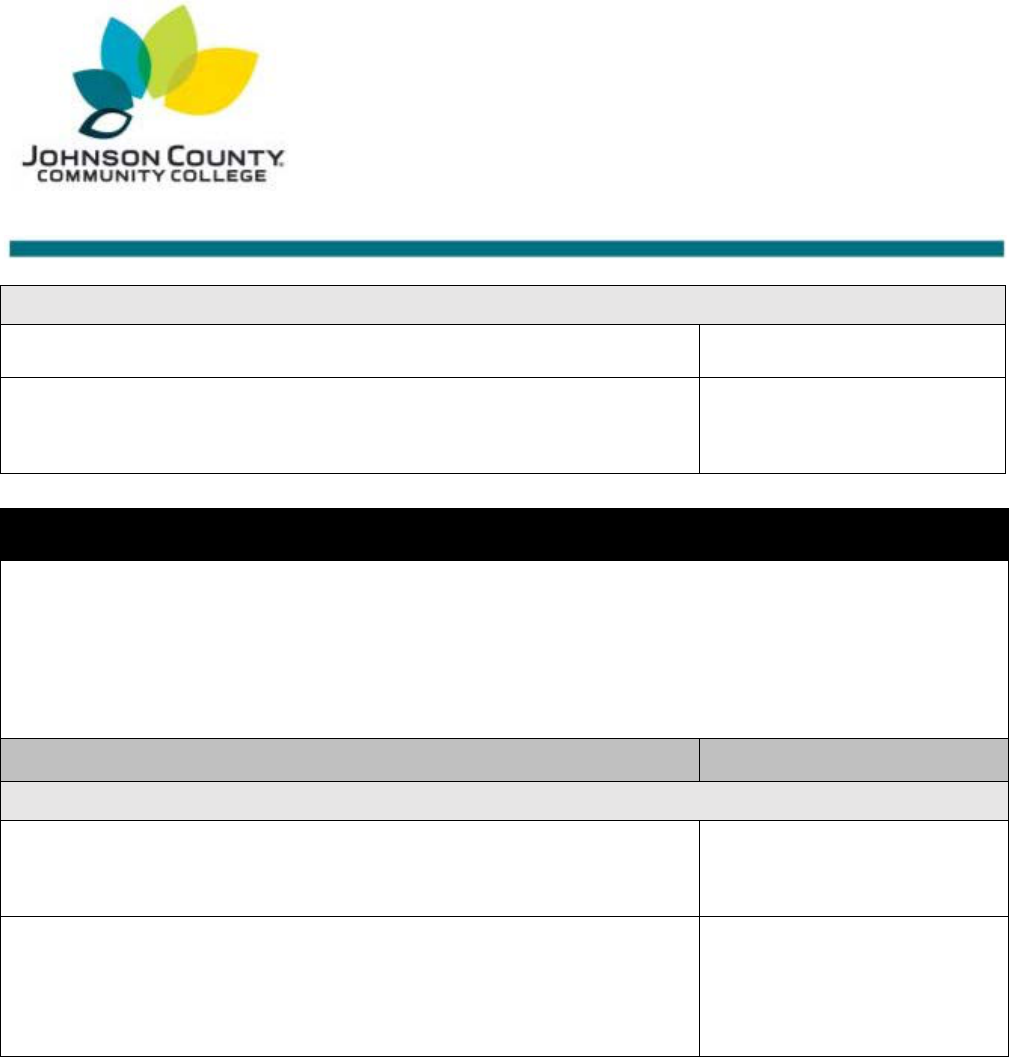
WRITING CENTER
Modern Language Association
(MLA)
Documentation
Last edited: 11/9/2022 23
Work of Art
Artist’s Last Name, First Name.
Title.
Date, Location.
(Artist’s Last Name)
Bearden, Romare.
The Train
. 1975, Museum of Modern Art, New
York City.
(Bearden)
GOVERNMENT SOURCES
GENERAL FORMAT FOR GOVERNMENT SOURCES
Last name, First
name (if authored by a person) or Government Issuing Document. Agency or
Department.
Title of Document.
Publication Office, Year of publication.
Note: There are many times of government documents, each with a slightly different citation
format. For information on citing a variety of legal works, visit www.style.mla.org/.
Full Citation on the Works Cited Page
Parenthetical Citation
United States Supreme Court Decisions
United States, Supreme Court.
Title of Court Case
. Date of
publication,
Publication
, Publisher, url.
(Author’s Last Name or
Government Issuing
Document)
United States, Supreme Court.
Brown v. Board of Education
. 17
May 1954.
Legal Information Institute
, Cornell Law
School, www.law.cornell.edu/supremecourt/text/347/483.
(United States)
ANNOTATED BIBLIOGRAPHY
Your instructor may ask for an Annotated Bibliography as part of the writing process. While
similar to a Works Cited page, an Annotated Bibliography serves as a tool for evaluating
and/or describing sources. To create an annotated bibliography,
1. Set up a Works Cited page according to MLA guidelines
2. Change the title of the document to “Annotated Bibliography” or “Annotated List of
Works Cited”
3. Indent an inch from the start of each citation entry
4. Write a description of the source
5. Keep the description succinct—no longer than a paragraph

WRITING CENTER
Modern Language Association
(MLA)
Documentation
Last edited: 11/9/2022 24
An annotated bibliography helps you remember what is contained within each source and
gives your instructor an idea of the sources you intend to use in your paper.
Example:
FULL CITATION ON THE “ANNOTATED BIBLIOGRAPHY” PAGE,
FOLLOWED BY A SHORT DESCRIPTION:
Moore, Nicole.
The Censor’s Library: Uncovering the Lost History of
Australia’s Banned Books
. U of Queensland P, 2012.
The book provides a comprehensive history of Australian print
censorship and discusses its implications in regard to questions
of transnationalism.
Smith 1
SAMPLE STUDENT PA PER
Alex Smith sample student paper
Dr. Moore
WCTR 100
30 June 2021
Metacognition and Learning Preferences in College Students
College students face any number of challenges in their adjustment to college life:
choosing a major, finding a sense of belonging, social, emotional, and financial burdens, but
perhaps the greatest challenge is adjusting to and meeting the rigorous standards of college
academics. Many first-time college students believe the study habits they learned in high school
or past educational experiences are good enough to get them through their college coursework;
this is often not the case. According to an article about improving classroom performance:
Most entering students are not adequately prepared either academically or in terms of
study skills for college level work. [They] arrive at college with highly overlearned study
skills developed in high school that are now ineffective […] One of the major challenges
students face in the transition to college is changing their entrenched but
counterproductive study skills […] The transition to college is not just about learning
new study strategies, but also about overcoming old ones. (Chew)
In order to overcome these “entrenched but counterproductive study skills” (Chew), students
must first take ownership of their learning experiences through developing stronger
metacognition skills. Once students acknowledge their active role in the learning process, they
can then determine their learning preferences. When students have better metacognition and
harness their learning preferences, they can begin to enter into the collegiate learning experience.
Smith 2
Before students can effectively succeed in college coursework, they need to develop
proper metacognition. Metacognition “is being aware of our thinking as we perform specific
tasks and then using this awareness to control what we are doing” (“Packet #1”). In other words,
students need to understand how they learn (Chew). When students practice metacognition, they
can more effectively evaluate their methods for learning, adapt them as necessary, and perform
better. Much of metacognition involves self-regulation, a quality which is often developed and
strengthened during the time in which traditionally aged college students are working through
their degrees. According to Education Endowment Foundation, “[m]etacognitive regulation is
about planning how to undertake a task, working on it while monitoring the strategy to check
progress, then evaluating the overall success” (EEF). Metacognition is like a bridge for
students—if they can develop this skill, they are then primed to have a growth mindset, which is
vital in succeeding in college courses. When students have conscious awareness of the study
process, they can determine what tools and techniques work best for them, refine those skills,
and harness them to their advantage (“Live with Ben Blood”).
Students can practice metacognition and more fully enter into the study process through
identifying their primary learning preference. There are four generally agreed upon learning
preferences: visual, auditory, read/write, and kinesthetic, or collectively referred to through the
acronym VARK. This inventory which was originally developed by Neil Fleming in 1987 helps
students determine their learning preference through taking the VARK questionnaire (VARK).
Originally described as “a communication questionnaire” (“The Origins of VARK”), VARK is
designed to identify the modality through which individuals prefer to learn.
The VARK questionnaire identifies four main ways through which students prefer to
present and process information (Boatman et al.). Visual learners prefer intaking information
Smith 3
through maps, graphs, charts, and diagrams; focusing on infographics in textbooks would be
beneficial for this type of learner. Auditory learners need to hear or talk through information;
lectures, listening to the audio version of a textbook, talking through concepts with someone else
are all tools for auditory learners. Those who learn best by reading information and then
regurgitating it through written word fall within the read/write category. Finally, kinesthetic
learners are considered hands on learners—they need to experience something or have it related
through real-life circumstances in order to comprehend the information. Case studies, practical
experiences, and demonstrations are all ways in which kinesthetic learners best retain material.
While the VARK questionnaire may indicate a student has a stronger preference towards one
learning style, it is likely that most students are multimodal, meaning that a combination of two
preferences more accurately represents the ways in which students learn (VARK).
Once students identify their learning preferences, they can adapt both their study habits
and even their potential degree track to best compliment the ways in which they most effectively
learn. Take for instance four students in a biology class, learning about mitosis and meiosis. A
visual learner would best learn these concepts through drawing out the different phases of each
cycle, whereas an auditory learner would need to listen to lecture or perhaps a podcast and then
explain the concepts to a friend. A student with a read/write preference would need to read the
textbook and write out key phases and definitions. Finally, a kinesthetic learner would need real-
life examples of mitosis and meiosis happening in nature. Employing learning preferences
expands beyond learning a single concept. For example, auditory learners can choose classes
with lecture and discussion components and kinesthetic learners can take classes with labs or
practical experiences (“Describe the Different”). Similarly, students can choose majors and
career paths that will allow them to harness their learning styles to their advantage. When
Smith 4
students “work to understand their individual learning preferences” they will “become more
efficient learners” (Sills et al.) and can thereby transform their collegiate experience.
Research has been conducted in a variety of disciplines to determine the efficacy of
learning preferences. During the 2005/2006 academic year at Saint Mary’s College of California,
researchers focused on introductory economic courses and sought out to answer the question of
“[d]oes learning style preference significantly impact student performance in introductory
economics courses and, if so, how?” (Boatman et al.). The research showed that students with
visual learning preferences tended to perform better in the economics course, which largely relies
on graphs and tables to convey information. The study also suggested that teaching strategies can
be adapted to better involve kinesthetic and auditory learners (Boatman et al.). Other studies
have been conducted, many with nursing and medical students, to assess students’ learning
preferences and suggesting adjustments in teaching strategies to accommodate different learners.
Though learning preferences are disputed by some researchers, evidence does show that
individuals find the information useful. Between May and August 2020, 237,537 people took the
VARK Questionnaire. Of that group, 34% of respondents had single preferences, with the
majority showing a preference for kinesthetic, and 66% of respondents were multimodal learners
(VARK). Of the 237,537 respondents, 29,082 filled out additional research questions. From this
data, it was determined that there was a higher preference among individuals, despite gender or
age, towards a kinesthetic learning preference (Gender and Learning Preferences) (Age and
Learning Preferences). Additionally, 74% of respondents agreed that the learning preference
they were assigned matched their perceptions of how they best learn (VARK). This data is a clear
indication that individuals find the VARK model a useful tool for how they best learn.
Smith 5
If students develop metacognition and apply it to tasks like determining their learning
preference, they are well on their way to becoming more effective learners. However, these two
traits alone are not enough to provide true change:
Knowing one’s VARK preference for learning is not enough to change study behaviors.
Each learner has to make their own changes and that requires effort, recognition and
metacognition. If those are not present the learner will remain with his/her strategies
unchanged and that may mean no change in academic success or the same levels of
success as previously. (VARK)
Metacognition and learning preferences are only the beginning of the learning process. Students
must take these tools and use them to establish a growth mindset, develop study techniques that
are beneficial to them and their coursework, maintain motivation, create useful time and stress
management techniques, and refine executive functioning skills. If students harness these tools of
metacognition and learning preferences appropriately and actively participate in their learning
journey, they are sure to find success in college coursework.
Smith 6
Works Cited
Age and Learning Preference. 2021. VARK Learn Limited, vark-learn.com/research-statistics/.
Boatman, Kara, et al. “’See how They Learn’: The Impact of Faculty and Student Learning
Styles on Student Performance in Introductory Economics.” The American Economist, vol.
52, no. 1, 2008, pp. 39 – 48. JSTOR, www.jstor.org/stable/40657694.
Chew, Stephen L. “Improving Classroom Performance by Challenging Student Misconceptions
About Learning.” Association for Psychological Science – APS, 1 Apr. 2010,
psychologicalscience.org/observer/improving-classroom-performance-by-challenging-
student-misconceptions-about-learning.
“Describe the Different Learners VARK Identifies.” YouTube, uploaded by varklearn, 19 Sept.
2011, youtube.com/watch?v=UcysYN6jeRM&t=197s
EEF [EducEndowFoundn]. “METACOGNITION AND SELF-REGULATION.” Twitter, 4 July
2021, twitter.com/EducEndowFoundn/status/1411736071315075075.
Gender and Learning Preference. 2021. VARK Learn Limited, vark-learn.com/research-
statistics/.
“Live with Ben Blood: Metacognition—The Bridge to Student Success.” Faculty Focus Live,
hosted by Tierney King, episode 13, 25 June 2021. Spotify.
“Packet #1.” Course pack for COLL 176: Strategic Learning System, compiled by Valerie Mann,
spring 2019, Johnson County Community College
Sills, Jennifer, et al. “Teaching and Learning Strategies That Work.” Science, vol. 325, no. 5945,
2009, pp. 1203-1204, JSTOR, www.jstor.org/stable/40301712.
“The Origins of VARK.” YouTube, uploaded by varklearn, 19 Sept. 2011,
youtube.com/watch?v=HdydEk4rlvY&t=67s
VARK A Guide to Learning Preferences. VARK Learn Limited, 2021, vark-learn.com
